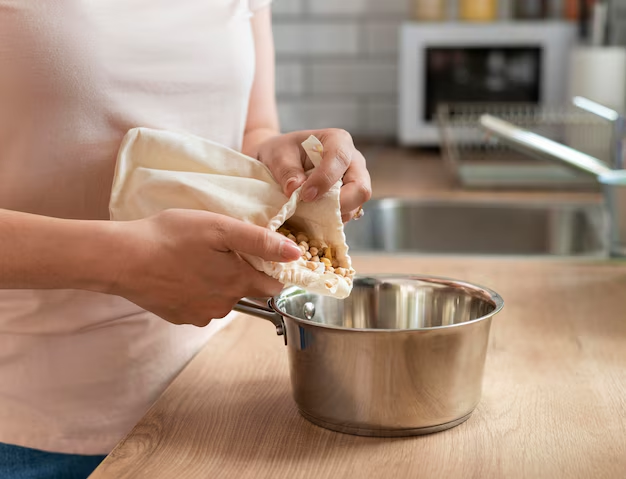Is It Safe to Put a Hot Crockpot in the Refrigerator? 🤔 Discover the Right Way
When you're finished with a slow-cooked meal, you might find yourself with a dilemma: what to do with the still-warm crockpot content? One question that often arises is whether you can put a hot crockpot directly into the refrigerator. The short answer is no, and here’s why. We'll explore this topic thoroughly, providing insights into food safety, practical tips, and best practices for handling your slow cooker meals.
🚨 Why Not to Refrigerate a Hot Crockpot
Food Safety Concerns
Performing this task can be risky for several reasons. The primary concern is the growth of bacteria. Placing a hot crockpot in the refrigerator raises the temperature inside, slowing the cooling process of the food. Food needs to move through the "danger zone" (40°F to 140°F) quickly to avoid bacterial growth, a feat not achieved easily if you put a hot dish in the fridge.
Potential Damage to Kitchen Appliances
Additionally, putting a hot crockpot into the refrigerator can potentially damage both. Hot temperatures could warp or crack the crockpot’s ceramic bowl, while the fridge could be overworked cooling down the hot item, leading to inefficiency and potential damage.
🌟 Best Practices for Cooling a Crockpot Safely
Cooling Strategies
Divide and Conquer: Transfer the contents into smaller, shallow containers. This step helps food cool faster than leaving it all in a large pot. Remember to cover these containers before they go into the fridge.
Ice Bath Method: For rapid cooling, fill a sink with cold water and ice cubes, then place the sealed crockpot bowl or your divided containers in the ice bath. Stir occasionally to speed the process.
Ventilation: Allow the crockpot to sit uncovered for a short period to prevent steam from warming up the fridge when you do store the container.
🕰 How Long Should You Wait? Timing the Cooling Process
Recommended Waiting Times
Ensure your crockpot contents have cooled properly before moving them to the fridge. As a general rule of thumb:
- For large portions, it might take one to two hours to achieve a safe temperature to cover and refrigerate.
- Using an ice bath can speed this considerably, reducing the risk of bacteria growth.
Monitoring Temperature
To ensure safety, using a food thermometer can reassure you. Aim for everything to cool down to 70°F within the first two hours, and below 40°F within four more.
🔄 Reheating and Serving Tips for Leftovers
Safe Reheating Techniques
When the time comes to consume your leftovers, proper reheating is vital to maintain safety and flavor:
Stovetop or Oven: Transfer food from containers to a pot for stovetop heating or arrange evenly on a baking dish before placing in the oven.
Microwave: If using a microwave, ensure even distribution by stirring periodically.
Essential Temperature Checks
Always reheat leftovers to an internal temperature of at least 165°F to kill any possible bacteria that may have dared to grow despite your best efforts.
🥘 Versatility of the Crockpot: Extending Beyond Traditional Recipes
Adventures with New Dishes
Crockpots are versatile kitchen appliances known for stews and soups. Here are creative uses:
- Yogurt Production: Use your crockpot for a homemade yogurt adventure.
- Bread Baking: Believe it or not, your crockpot can bake bread, offering a unique twist on typical baking methods.
- Candle Making: A non-food use, but a thoughtful approach to creating homemade candles.
Practicality and Convenience
Crockpots save time and are energy-efficient. Exploring multiple uses can provide added value, making it a priceless tool in your culinary arsenal.
📋 Quick Reference Guide: Handling Hot Crockpot Food
Here's a concise checklist to ensure your hot crockpot contents are dealt with suitably:
- 🌡 Temperature Danger Zone: Keep food out between 40°F to 140°F for extended periods.
- ♨️ Cool Quickly: Use ice baths or shallow containers.
- 🍲 Cover Before Refrigeration: Once adequately cooled.
- 🕒 Time Management: Aim for safe cooling within two to four hours.
- 🔁 Proper Reheating: Ensure all reheated food hits 165°F before serving.
In embracing these guidelines, you ensure not only delicious, but safe meals await every time you decide to employ your crockpot. These practical tips make for a safer kitchen experience, ensuring that all your delicious efforts aren't wasted by the simple mistake of refrigerating a hot crockpot. Always prioritize food safety and proper handling practices in the kitchen to enjoy your culinary creations to the fullest. 🌟
